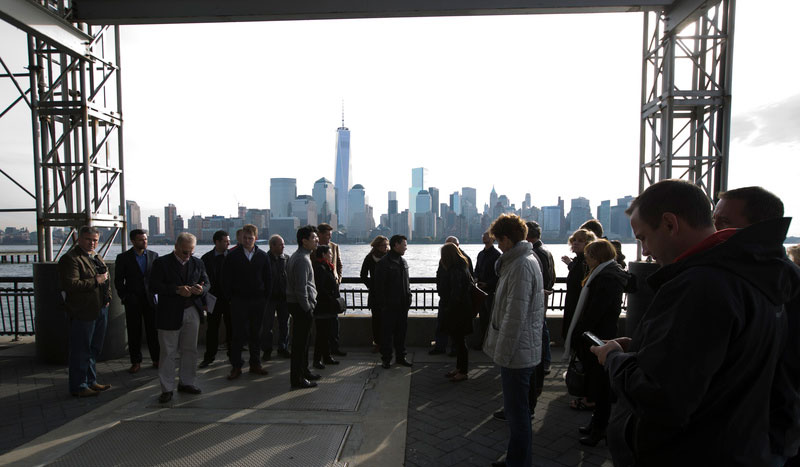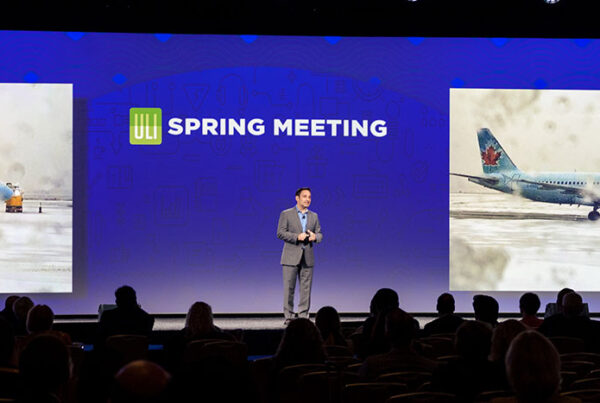
2014 ULI Fall Meeting attendees tour Jersey City, New Jersey, with the One World Trade Center and the Manhattan skyline in the background.
In observance of the 20th anniversary of the 9/11 attacks in New York City and Washington, D.C., Urban Land is highlighting the redevelopment of lower Manhattan.
The ULI Fall Meeting, the Institute’s largest annual gathering, will return to New York City in 2024.
Lower Manhattan Rises
Thirteen years after terrorist attacks leveled the World Trade Center’s twin towers, a redrawn skyline is emerging in lower Manhattan, led by the gleaming new One World Trade Center rising from the site. Along with that architectural—and emotional—milestone, the reputation of lower Manhattan is receiving a makeover.
Rebirth of Manhattan’s Downtown
Larry A. Silverstein, chairman of Silverstein Properties, spoke at the 2014 ULI Fall Meeting just prior to the opening of One World Trade Center. The panel discussion highlighted how lower Manhattan has added residential, retail, and open space to create a more livable neighborhood.
Battery Park and the Rebirth of Lower Manhattan
Located at the southern end of Manhattan Island, it has been called one of the most significant major developments built in the United States during the past 100 years. It is not the World Trade Center, where two new skyscrapers, a 9/11 museum, and throngs of tourists have attracted all the attention of late, but Battery Park City, the 92-acre (37 ha) mixed-use “new town” that won the 2010 ULI Heritage Award.
Landscape Architect Peter Walker Awarded the 2012 ULI J.C. Nichols Prize for Visionaries in Urban Development
Landscape architect Peter Walker, founder of PWP Landscape Architecture in Berkeley, California, has been chosen as the 2012 recipient of the ULI J.C. Nichols Prize for Visionaries in Urban Development, the Institute’s highest honor. Walker was one of the chief designers of the National September 11 Memorial, Reflecting Absence, in New York City, which opened September 12, 2011
9/11 and the Built Environment: What’s Different and What’s Not
ULI’s former Global CEO Patrick Phillips wrote, “what did not change is this: people’s desire to live in urban areas that offer a high quality of life with ample choices for housing, jobs, transportation, education, and recreation—places that offer variety, spontaneity, and delight.”
Lower Manhattan Residential Stays Strong Ten Years After 9/11
Lower Manhattan has become one of the fastest-growing residential neighborhoods in New York City with a population that has more than doubled—to 56,000—over the last decade, reports the Alliance for Downtown New York
2001 UL Interview with Senator Daniel Patrick Moynihan
Speaking at the 2001 ULI Fall Meeting in Boston, Senator Daniel Patrick Moynihan was honored with the ULI Urban Visionaries prize and also addressed the recent attacks on lower Manhattan.
From other industry publications:
– Dezeen on 9/11’s impact on architecture
– PropertyWeek: Legacy and Lessons from 9/11



